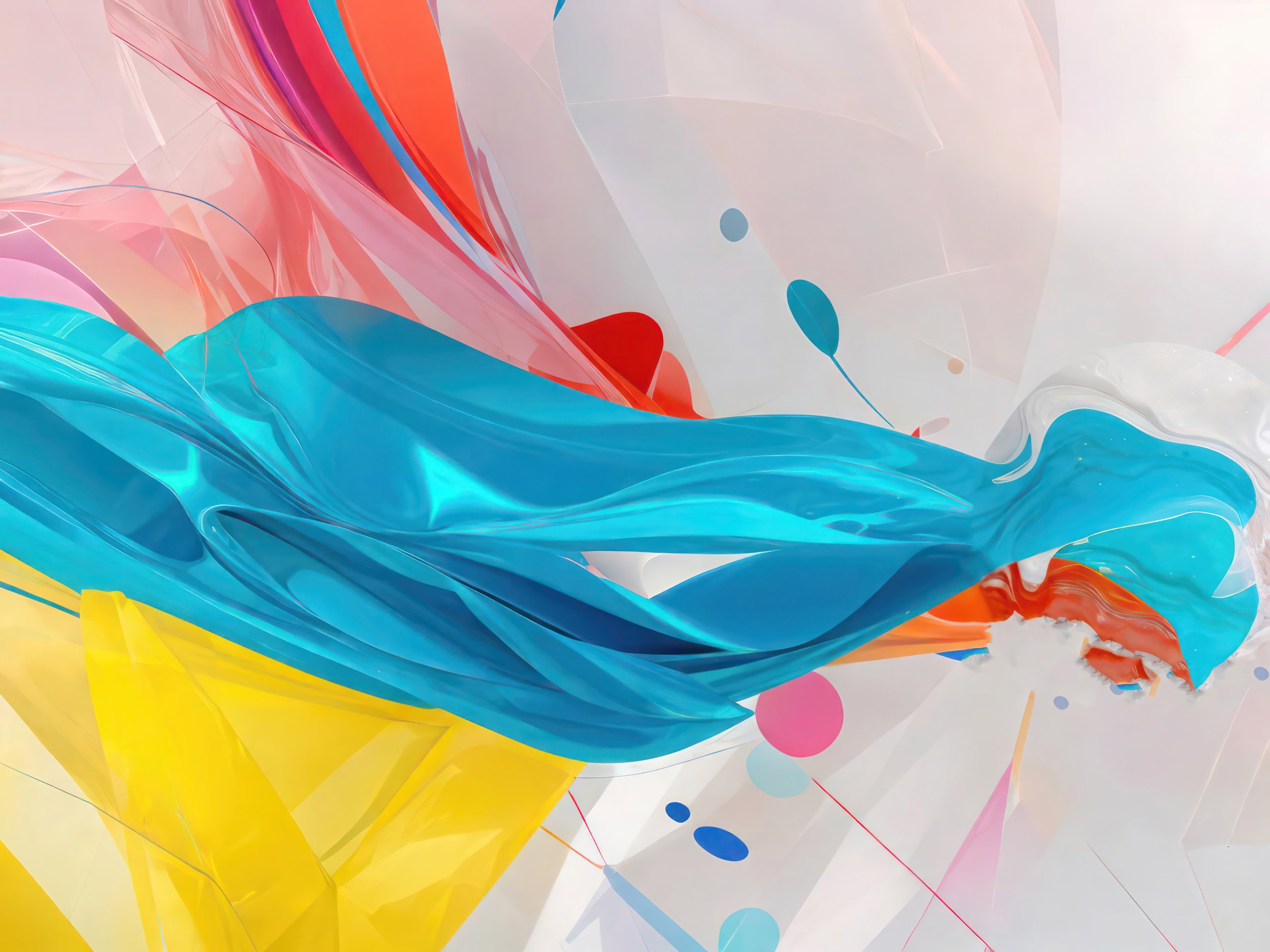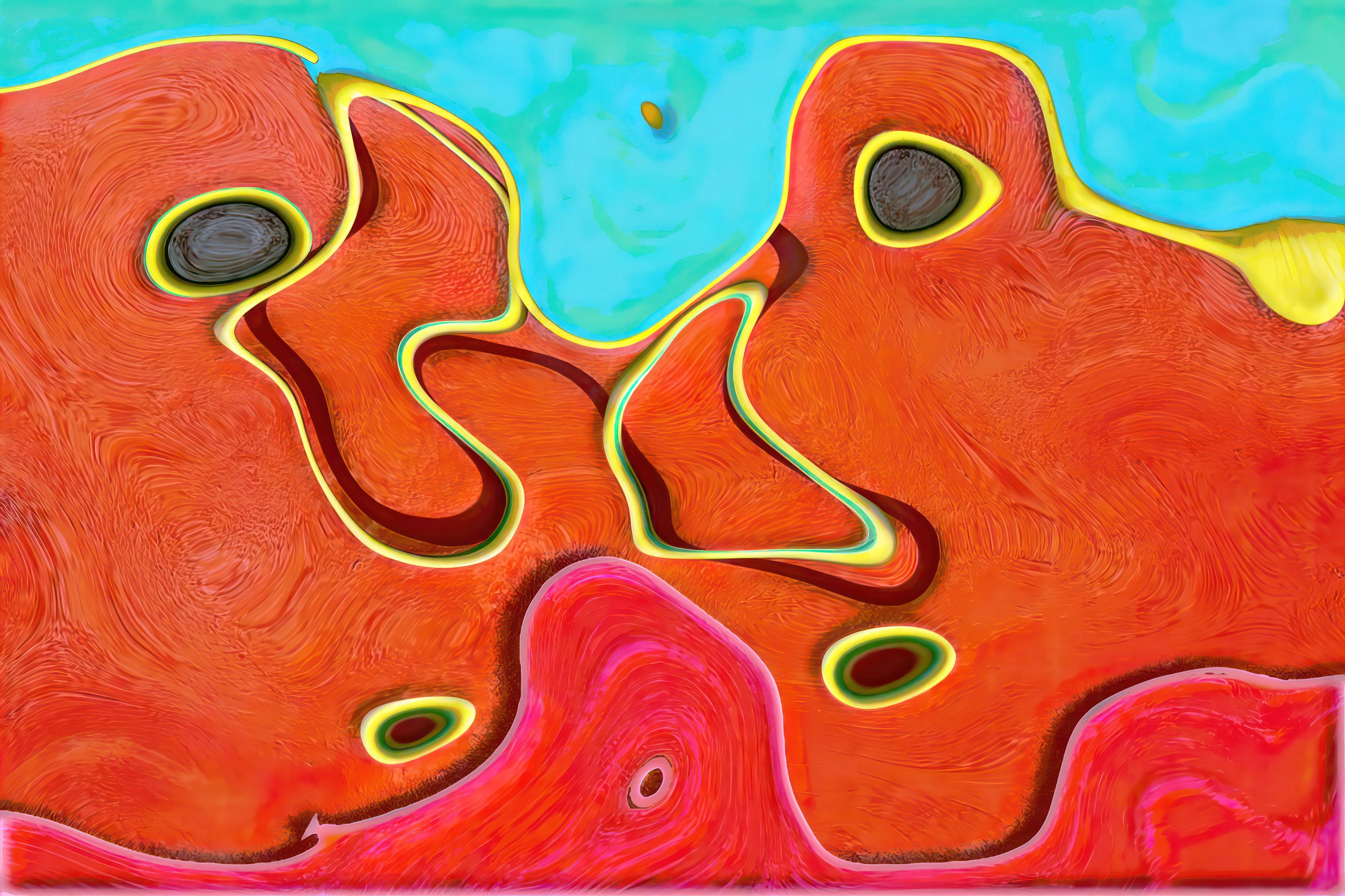Artist Interview: Cecil W. Lee
Cecil W. Lee is a self-taught artist whose work presents a blend of photography, painting, and digital techniques. He creates abstracts, figurative works, and digital collages that embrace computers as a stimulating and distinctive artistic medium.
Discovering his passion for photography during his late teens, the artist eventually transitioned from photography to painting and mixed-media art. Cecil employs a variety of software applications, hardware accessories, and digital technologies to craft, manipulate, and evolve his pieces.
We asked Cecil about his art, creative process, and inspirations.
“Exchange of Ideas” minimalist computer evolved image with embedded ai formulated image
Can you tell us about your background as a digital artist? How did you get started in this field?
Over the years I have practiced art as a self-taught photographer, painter, and mixed media artist. I owe my artistic roots to the purchase of my first camera at age seventeen. I later purchased my first computer inspired by the lure of a new creative and intellectual frontier and created a digital library of my photography and tactile paintings. To standardize the size and quality of my images I manipulated them to achieve consistency in size and quality. With no objective in mind, no time restrictions and six months of unemployment I experienced a transformative period. I eventually found myself marketing online photo altering and restoration services. It was the beginning of my considering myself a digital artist and coining the term Computer Evolved Art.
“We” 3 photographs/collage/computer evolved/ai/computer evolved
I have always had a conscious desire to create digital art from a painters’ perspective, at the same time, I do not want to imitate. I had to find a way for me to express the constantly changing artistic evolution of my inner self, digitally. “We” is a combination of three individual photographs turned into a seamless collage.
“Le Blue #2” photography/computer evolved
What inspires your art? Are there any particular themes or subjects that you enjoy exploring through your artwork?
I like telling stories with my art. Whether abstract there is always an underlaying message, feeling or emotion I am trying to express. When art steps away from reality, why and where does one go and who will appreciate it? My major objective is reaching an audience with varied stimulating imaginative work that elicits insight and emotional responses. I know, easier said than done!
“Over Me” photography/computer evolved/ai/computer evolved
“I often use the title of an image to express a concept that runs through my head before or after its creation. I do it as reinforcement, and the viewer is presented with a concept besides their own. Unsure if that is a good or bad idea. I call it a learning process nourished by assumptions.”
“When Cows Moo and Elephants Walk” computer evolved collage
A way of understanding Computer Evolved Art (CEA) is to think of it as digital compositing; the process of creating and digitally assembling image(s) to create a new final image.
“Baby Girl” ai/computer evolved
I use my photography, paintings and digital files as source files, in combination with a wide range of software applications including elements of ai and hardware accessories as artist tools. The resulting images are subset of digital, in the form of computer evolved, (digital/computer evolved). CEA pays homage to all artists who utilize a computer in their work. As opposed to terms such as computer art, digital art, digital music, digital games… and other offshoots that tend to imply creation preference to the computer or digital process over the (creative controller), the human artist.
“Are You Here Alone” computer evolved
Can you share an example of some of the obstacles you encountered?
Slow changing paradigms – there has been resistance to the acceptance of CEA, which is historically similar to the manner society has treated other new and unique art styles, some with disdain and others with open arms. Historically, different forms of art were met with disapproval and resistance when compared to the accepted norms of the time. Impressionism, cubism, and abstract art were all examples of this phenomenon. Many of the original creators of these art styles did not receive recognition until after their deaths.
“Tokens of Ideology” computer evolved ai altered photograph of a mixed media 3d work
You also blog about digital art — what kind of an impact do you think reflecting on your practice has on your work?
Withstanding differences of opinions there is no doubt that Computer Evolved Art or one’s chosen definition, represents a predictable and exciting perspective of the future of this art form and its artists everywhere.
“Expressing my philosophy on art with words.”
“Unfiltered Activities” abstract computer evolved art
Becoming New
“This morning, I have decided that I do not know if I like cold damp weather. So, I will go out, and in a sense become NEW, ignore the concept ingrained in my head, since childhood, that cold damp weather is uncomfortable. What will I find? Will this newness add adventure to my day, stimulate my imagination, add energy to my gait or even add sparkles of excitement to my eyes? Is this like what is often referred to as the innocence of a child or will it prove to be an imaginative period of freedom in which I can retake control and redefine who I am?”






















